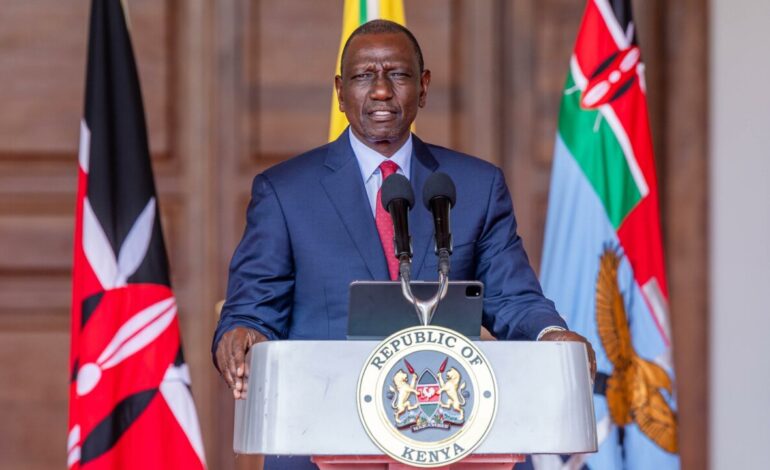President Ruto forms committee to review university funding model

President William Ruto has appointed a team of 129 members to oversee the review of the new university funding model which has encountered opposition from members of the public, particularly university students.
The committee will consist of four sub-committees. One sub-committee will focus on reviewing and refining the new funding model for universities, vocational education and training institutions (TVETs).
The second sub-commitee will address appeals related to the categorisation of students into different bands. The third and fourth sub-committees will evaluate the structure of student loans and assess the cost of university academic programs respectively.
“The chairpersons and co-chairpersons of the workstreams (sub-committees) will form the Coordination Board of the Committee for the New University Education Funding Model. The board will include Japheth Micheni Ntiba as chairperson, along with the chairpersons and co-chairpersons of the four workstreams and lead joint secretaries from each of the workstreams,” Ruto stated.
The New University Funding Model was developed by a team selected by Ruto to review Kenya’s education system and propose essential reforms, specifically targeting the improvement of higher education financing in the country.
The head of state has previously defended the controversial university funding model, highlighting its attention to students’ different levels of vulnerability.
“We need a funding model that is not focused on the university but focused on the student. A funding model that will not leave any child in Kenya behind but a funding model that recognises that there are children that come from vulnerable families,” he said.
The new university funding model offers financial support to students through scholarships and loans, placing them into one of five bands created to represent their level of need. However, the model has faced strong opposition from university students, parents and lecturers with critics claiming it wrongly classifies students.
Moreover, the new model stipulates that only students placed in public universities by the Kenya Universities and Colleges Central Placement Service (KUCCPS) will be eligible for scholarships and loans while those attending private institutions are only eligible for HELB loans.
The National Committee will operate for eight weeks starting September 16. Both the committee’s secretariat and its workstreams will be based at the Ministry of Education Headquarters, Jogoo House. The committee will report to the President through the Education Cabinet Secretary.







